 Husky dogs (normally Siberian huskies, though Alaskan huskies are also available) are popular as pets in the UK. They are large dogs and so they need lots of space and exercise, and they also need plenty of food. Husky dogs are fantastic pets to own, though, because they are very friendly and loving dogs who want nothing more than to be with their best friends (their family). Therefore, despite their rather intimidating size and wolf-like appearance that might normally put a parent off buying or rehoming one, husky dogs make good pets in households where there are children. Their high energy levels and desire to have fun at any given opportunity make them a good match for playing with energetic, fun-loving children. They have very predictable natures, so you don’t need to worry about whether they might suddenly change their mind about whether they want to play or not (though of course, as with any dog, you should not allow your children to play unsupervised with them). They are not territorial and so are safe for visitors (including friends your children may bring home). Husky dogs love running around, but this means that you need to be careful not to let them out of your house if you live on a main road unless you have a secure garden. Children are usually not strong enough to contain a husky on a lead, so if you’re walking with the dog on a lead anywhere a capable adult should hold it. If you see any adverts for husky puppies for sale, think carefully before buying because you’ll want to make sure that they have been bred with care. If they are being sold by professional breeders the husky puppies will be sold with pedigree paperwork and you should be able to meet the parents (or at least the bitch) to check for yourself what sort of temperament she has. The temperament of the parents is usually passed down to the puppies. If they’re being sold by a casual breeder, or the owner of the bitch that has had an unwanted or unplanned pregnancy there won’t be pedigree paperwork available but you should at least be able to meet the mother. You might choose to rehome husky puppies or adult huskies from an animal charity or rescue home, since this breed like any other often finds itself in need of a home. Indeed, they are perhaps less likely than other breeds to be rehomed from a shelter because many people want pedigree status with their husky dog, or else they are looking for a smaller breed. If you want a husky dog from a rescue centre you can ask whether your local centre has any and you can put your name down to be contacted if one becomes available for rehoming.
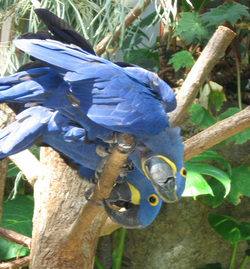 Parrots are perhaps the most commonly-owned of all exotic pets in the UK, and they can give their owners a great deal of pleasure through their attractive colours and intelligent behaviour. But as with all exotic pets it is important to give the right pet care because giving them the wrong diet can make them very ill. Pet birds are frequently given up for adoption because their owners did not consider how much care and attention they would need before they bought them. If you’re thinking of buying or rehoming a pet bird, only do so if you believe that your parrot will have enough company and entertainment during the day: a bored or lonely parrot will become stressed and unhappy and will often pluck out their feathers. Also be sure to check your bird regularly for obvious signs of ill-health or mites, and get your bird seen by a specialist vet at the earliest opportunity if something seems amiss. It is a good idea to get pet insurance for your bird – there are specialist policies available for exotic pets that should cover birds, and the monthly premiums tend to be small (and certainly more than the cost of any vets’ bills). Different breeds of bird need different food to thrive. Parrots can become ill if they are not given a diet with all the nutrients they require, so take care to understand what they need before you buy. Parrots’ diets should include some seeds but seeds should not make up the bulk of their diet. Seeds are high in fat and lack certain vitamins and minerals that parrots need to be healthy. There are specialist parrot pellets available that offer all the vitamins and minerals that parrots need, because they are made from a variety of foodstuffs including fruit and vegetables. These are a better option than seeds alone, but parrots often grow bored of eating them and they should be offered fresh alternatives to supplement the pellets. Good vegetables to offer include dark green leafy veg like spinach and cabbage or broccoli. Offer these vegetables cooked or raw to see what your bird prefers. You can try other vegetables like carrots, green beans, peppers, corn or cucumber. They also enjoy fruit and get many of their vitamins and minerals from it. Good fruit to offer can include: kiwi, pineapple, berries, apples, grapes, peaches, bananas and oranges. Don’t let them eat the pith or seeds as these can be toxic. You can also offer your parrot pasta and brown rice (cooked). As parrots need plenty of calcium you should make sure that they always have access to a cuttlefish bone in their cage, which they will enjoy nibbling on. Never feed your parrot: avocado, apple seeds, chocolate, rhubarb or onions, and don’t give them any lactose products (like cheese).
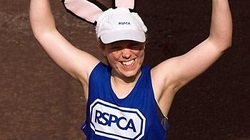 Different charities appeal to different groups of people. There are charities that fund research into serious illnesses, or which fund hospices for people who are dying and in need of care. There are also those that fund support for homeless people or people recovering from various addictions or ailments. But whilst there are many specific charities aimed at helping people in very specific situations, animal charities are generally aimed at helping all animals in whatever circumstances and you know that if you donate to an animal charity you’ll be sure that your money will do plenty of good. You can donate money to charity easily enough – by dropping coins in a collection box or by making a monthly direct debit payment to your chosen charity. But fundraising takes your donation to a whole new level! Fundraising activities and events bring together likeminded people who can all donate funds to a good cause whilst having a good time. You may have plenty of your own fundraising ideas already but if not, then take a look at some of these ideas, which are great for fundraising for animal charities in particular: - Ask your local pet shop (the large chains are often the most central and attract the most footfall) if you can set up a stand outside their shop. Take some pets with you (dogs are ideal if they’re well-behaved) and people will find it hard to resist talking to you and petting the dogs – and they’d have to be pretty mean-spirited to not give a donation then! - On your stand (outside the pet shop, or perhaps at a local fete) have information about your chosen charity and a collection box, together with some little things that fellow pet-lovers might want to buy (like little bags or boxes of treats for all sorts of pets, or bags of duck food if you’re anywhere near a local pond!). - Go online and sell something silly like one post-it note with a paw print on it for 10p each plus postage. You’d be surprised at how many people will buy things like this if it’s for a good cause. Donate any money you raise direct to your animal charity of choice. - An unusual idea that will work best if you live on a main road is to paint your front door with cats or dogs of a variety of garish colours. Put a poster in your local post office or newsagent with two collection tins: one saying ‘keep the door as it is’ or ‘change the door back’ and let people vote with donations. At the end of the month, the tin with the most money wins – so you’ll either have to keep your front door the way it is or paint it over with a neutral colour. Whatever fundraising ideas you use, you’ll be sure to make some much-needed and appreciated cash for charities that rely on that sort of donation to keep going.
 As pets go, a horse is pretty much at the top of most children’s wish list. A horse offers companionship and freedom to ride around independently and is lots of fun to be around. Of course, a horse is a powerful animal and proper supervision must be given at all times when allowing your child to ride or care for one. But if your child is properly supervised and learns how to ride properly as well as care properly for their horse, there are many benefits to your child of keeping a pet horse. For one thing, your child will quickly learn that they are responsible for caring for their horse and that that means getting up early every morning, feeding, mucking out, grooming, cleaning tack and picking out hooves – a pet horse isn’t just for riding. This sense of responsibility and duty will stand your child in good stead as they grow older, and the need for them to be up early to care for their horse each day (and the fact that they will want to spend all their time at the stables) will keep them out of trouble as they hit their teens! Whilst most sorts of pets live in the house and don’t take much looking after compared to a horse – so there’s no pet quite like a horse for getting your child out of the house and into the fresh air. Horse riding is aerobic exercise, great for keeping a child’s heart and lungs in top condition and good for reducing excess weight or maintaining a healthy weight. With fitness comes confidence, so your child will develop their sense of self and really come out of their shell. Horse riding also improves co-ordination, dexterity and balance – if your child has dyspraxia then it is a great hobby to get them interested in for that reason alone. If you are thinking of investing in a horse as a pet for your child, only do so if you can commit to caring for that horse for the rest of its life. Remember that the horse might still be alive and in need of looking after even after your child has moved out to go to university or to live independently. A horse also represents a huge financial commitment. Many horses are abandoned or taken to charities to care for because an owner cannot afford the time or money to continue to care for it. If you want a horse as a pet, consider rehoming one such horse and you’ll have a friend for life.
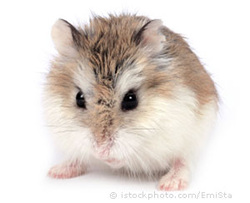 It’s great to let a child have a pet. Most children start clamouring for a pet of their own at any time from the age of about three years. Pets make great companions for children, and teach children the value of caring for someone or something other than themselves. They can help a child to learn responsibility and that a pet is not something there to be played with and discarded as the mood takes them – they need to meet that pet’s needs every day, too. When the time comes, pets will also teach children about death. However sad it is when a pet dies, the child will learn about the grieving process and have opportunity to talk with their parents about what life and death is all about. It makes it much easier for them to deal with the death of a human friend or relative because it will, by then, be a familiar concept. But when is the best age to introduce a pet to a child? You might already have pets in the house from before the child’s conception, in which case the child will learn from a very early age how to treat that pet. If you have a cat, for example, your child will quickly learn not to chase it, pull its tail or stroke it the ‘wrong’ way. As a responsible pet owner you’ll need to make sure that your child’s access and play with existing pets is carefully supervised (especially if you own a dog). But if you want a pet for your child, that they can call ‘theirs’, when is the best age to take that step and what sort of pet would be a good choice? If your child is still a toddler, they will be too young to appreciate having a pet of their own and should not be expected to care for any pet. If you have existing pets or get a new pet when your child is this young, make sure you take care to avoid them coming into contact with things like your pet’s food or litter trays. By the time your child reaches about three years of age, they are ready to start learning how to handle pets with care and to engage in some pet care. Guinea pigs and hamsters make ideal pets for this age range (children from three to five years will appreciate them the most), and your child can help with the care of their pet by filling their food bowls and changing their water bottles. Guinea pigs enjoy having company and being held on laps and they respond to treatment they like by making little squeaking noises, which reinforce your child’s careful and loving behaviour. Hamsters are more fun to watch as they move around more and enjoy active play in their cages. When your child is between five and ten years of age, depending on the maturity of the child you may be able to entrust more of the pet care to them. For example, rabbits, hamsters and guinea pigs or fish would make good pets and your child could help to clean out their cages as well as top up food and water. Any pet care would need to be under adult supervision, and you should also double check to make sure the pet has enough food and water and that the cage is locked rather than rely on your child to tell you. From age ten, children will have more interest in their pets and be able to take greater responsibility for them. Cats, dogs, rabbits, guinea pigs and hamsters all make great pets; your child can be asked to clean out the cage, walk the dog, brush the cat and feed and give clean water to all of these pets. However, at this age a child is still a child and you as an adult should take ultimate responsibility for the pet’s wellbeing and double check that they have enough food and water etc.
 Kittens appeal to everyone, don’t they? They’re so cute and fluffy, with their enormous eyes, ears and paws and their boundless energy. They play and explore and nap on your knee. But somehow, when kittens become cats, they become less appealing to many people looking for a new pet. Cat rescue centres and charities receive cats of all ages, either because their owners cannot care for them any longer or because of cat protection issues. Cat rescue centres can rehome kittens quickly and relatively easily, but many adult and senior cats get overlooked for adoption. Yet adult and senior cats make fantastic pets and you should consider adopting one for these reasons: - Their personality is already there – you know just what sort of cat you’re going to get. Most kittens are playful, friendly and affectionate yet when they become cats and develop their own identity they can be completely different. At least by taking in an adult cat you’ll know what you’re getting. - They are usually already housetrained and may already have been taught not to scratch at the furniture. - They’re already fully grown and the length of their fur is obvious – so if you don’t want lots of hairballs to deal with and want a short-haired breed it’s easy to choose one. - They don’t sleep as often as kittens but they sleep for longer periods and are very happy to curl up on your knee or beside you for company when you’re relaxing. - If a senior or adult cat is not adopted, it is likely that they will be euthanised if the rescue centre isn’t able to keep them indefinitely. If you opt for an adult or senior cat, they may need special care and attention once they hit around 12 years (they may start with age-related physical problems at any age from about 7 years onwards). If a cat were a human, they’d be at retirement age when they reached 12, to give you an idea of their lifespan and physical capabilities. As a cat gets older, its immune system weakens and it may be more susceptible to disease. Their claws can become brittle. As they get more advanced in years they may need your help with grooming as they become less mobile. They can experience hearing loss and poor sight. They can also, at a very advanced age, suffer symptoms that, in a human, would be called dementia. They may also suffer problems with their teeth and joints. Basically, the sort of problems that humans suffer with age can affect cats protection in similar ways. It’s important to regularly check your cat for signs of disease or pain and take them to the vet if you’re unsure. Ensure that they are groomed properly, and make sure you meet their nutritional needs too, and keep a close eye on any weight gain or loss.
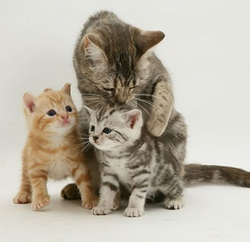 If you own a cat (or cats), the chances are that you might never have to give them a bath, particularly if they have short hair or live indoors. But there are times when the need to bathe your cats cannot be avoided – for example, they might come home one night covered in some kind of mystery substance from who-knows-where, or they might have loose stools that get matted up in their fur near their tail (especially if they have long hair). If your cat needs a bath, then you can either take it to a local pet grooming service, though for many cats the stress of going in a cat carrier and in the car is greater than any stress that could be caused by being given a bath at home. And that’s your alternative, of course – to give your cat a bath at home. If you’re really well-prepared, then you will have given your cat or cats baths when they were kittens, to get them accustomed to being washed. Few people do this, though, so if you’re reading this having discovered something unknown or undesirable in your cats’ fur then you’ll be dealing with a cat that has never been wet other than through its own choice or by being caught out in the rain. Your cat will not be happy with you if you decide to give it a bath, but needs must. You’ll need cat shampoo (human shampoo will irritate their skin because it is too harsh), a big bowl of water (a bucket is normally too narrow) or sink filled with about four or five inches of warm (not hot) water and a towel spread out on the floor next to you. You’ll also be well advised to wear long sleeves that you don’t mind getting wet, and perhaps lightweight gardening gloves (you are going to get scratched). Finally, make sure your showerhead will reach the sink or bowl, or use a showerhead attachment that you can fit to the sink’s taps. Speak softly to your cat and make soothing sounds whilst you put it in the water. You may need a second person to help you as the cat will try to use their legs to stick to the sides of the sink/bowl rather than touch the water. If your cat likes treats, offer some and see if that will distract them – it might not. The key is to get this task done quickly and efficiently to minimise distress to your cat. Put a little bit of shampoo onto your cat’s body (either the bit that needs it or all over, depending on why you’re bathing your cat in the first place). Don’t put it on their head if you can avoid it – and if you must use it on your cat’s head then make sure it doesn’t go in its eyes or ears. Rinse the shampoo out with the showerhead (again, take care not to allow the shampoo to get in the cat’s eyes or ears), then remove your cat from the water and put it straight onto the towel. Wrap the towel around the cat to keep it in place and use it to gently rub the cat dry. If you have more than one cat and have for some reason had to bath both cats, never try to bath them together. Unfortunately the second cat will be harder to catch and bath because it will have seen what happened to the first cat and do everything in its power to avoid the same fate. After the cats have been bathed, they will smell different and they might fight. Use the same towel to dry both cats, and keep them separated until they have had chance to lick themselves properly. Don’t let your cats go outside until they are completely dry or they will be very uncomfortable. Finally, pour yourself a glass of wine, apply plasters where needed and fervently hope that you’ll never have to go through it all again.
 Dogs make wonderful pets, as anyone who’s ever owned one will tell you. Dogs that have been chosen from dog rehoming centres, though, can have some issues that other dogs probably won’t. Some of them might have been abused; some might have been neglected; some might simply not have been trained or disciplined and can display challenging behaviour. Others might have to be rehomed simply because their owners cannot care for them any longer however much they might want to. Dog rehoming can be a stressful and unhappy time for dog and former owner alike, but you can make the task that much easier by being a well-prepared and loving new owner, ready to get to know your new dog and meet its needs. If you’ve taken the step of dog rehoming rather than buying a dog from a breeder, then you’ve made a really generous and responsible choice. This article will offer some suggestions about how to settle your dog into your home and how the whole family can adjust to your dog’s arrival. Before you bring your dog home, get down on your hands and knees and see your home from the perspective of your dog: are there any obvious dangers or items that you wouldn’t want to be damaged that are accessible by your dog from that height? If so, move them higher! Your new dog might not have been toilet-trained, or might have accidents because he or she is so anxious, stressed or even excited about being in a new environment. To minimise damage or mess, put your dog’s bed in the kitchen or wherever there is a hard floor rather than a carpet. Show your dog where it is acceptable for him/her to go to the toilet. Agree as a family on the sort of words you’ll use to talk to your dog for key instructions like ‘drop’, ‘walk’, ‘dinner’, ‘fetch’, ‘stay’. If you’re all using the same words then it will be easier for your dog to comply once they know what is expected. If you don’t have this discussion before your dog arrives, make sure you have it soon after or your dog will end up very confused. For the first few days of owning your new dog, make sure the whole family can be around the house as much as possible so that you can all get to know each other well. Introduce young children to the dog very carefully so that the dog isn’t overwhelmed and make sure the child knows how and where to pet the dog. Avoid having visitors round until your dog is settled. Give your dog the same food as it has been given in the rescue centre, and if you want to change brands or food type then start mixing the new in with the old gradually over several days. Make sure your dog has been adequately vaccinated and is neutered or spayed before taking them out for the first time and it’s a good idea to have your dog micro chipped: in the early days your dog is more at risk of running off and getting lost than when they are familiar with routines, commands and where their ‘territory’ is.
 Taking pets (especially dogs) on holiday is now becoming more and more commonplace. There are many pet friendly cottages available throughout the UK, so if you’re planning on travelling in the UK this year there really is no need to leave your pet to be cared for at home, or to put your pet in a kennel or cattery. Whilst it is possible to travel abroad with your pet if they have a pet passport, most people find that taking their dogs on such a long journey is unfair or too much for their pet to handle comfortably, so they stick to holidays in the UK. Dog friendly cottages are very popular in places that attract walkers and ramblers, such as in the Yorkshire Dales, the Highlands, Cornwall and Devon, and Norfolk. However, it is important to act responsibly when taking your dog or other pet on holiday. Some holiday homes that have previously advertised themselves as ‘pet friendly cottages’ stop doing so because of the mess that has been left behind by irresponsible dog or pet owners. Pet friendly cottages can only continue to exist if they are treated with respect. Before you book with a pet friendly hotel, make sure you tell them what sort of pet (and/or how many pets) will be travelling with you and check that they will be happy to accommodate you. If you have several particularly large dogs, for example, you might find that the dog friendly cottage you had hoped for is rather reluctant to let you stay. It is better to book into somewhere that knows what to expect than to hide information and make things awkward later. You should be asked for proof that your pet is free from disease or parasites before your visit, so that any future pets are not infected – if you are not asked, then beware that whoever visited the cottage before you might have left behind some unwanted pests! If you are staying in a pet friendly cottage, don’t leave your pet behind when you go out because your pet could get up to all sorts of mischief (and may spend the day annoying the neighbours with barking or other noise). Make sure you clear up any mess left behind in the garden (or inside, of course!). Keep dogs on a lead when near other people and if you are travelling on public transport keep your pet close to you and contained in a suitable pet carrier. Make sure that whatever happens, you know that the people who have rented their cottage to you would be happy for you to return. If you act irresponsibly then you may make them decide not to accommodate any pets in future, which spoils it for everyone.
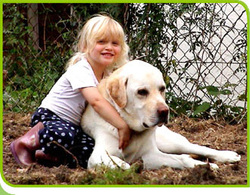 If you’ve taken the decision to adopt a dog from one of the many rescue centres in the UK – first of all, well done! You are giving a dog a wonderful opportunity of a new, happy life. They will be forever grateful and will love you unconditionally, more so perhaps if they have previously been ill-treated or neglected in the past. But taking the decision to adopt a dog leads naturally to the next step: choosing from all the rescue dogs for adoption that you’ll see in the shelter. How on earth do you decide which one(s) to take home and which ones to leave? It will be a hard choice to make, but you need to be realistic about what sort of dog you can care for properly. That might mean that certain breeds or temperaments have to be discounted from the pool of potential pets. If you have a dog already, think about how they will react to a new dog; perhaps take them along to the shelter to get an idea of how your existing dog and the new dog(s) interact. You should bring everyone who lives with you along to meet the dogs available so that you can all be sure of getting along when your dog comes home with you. Make sure you choose a dog that you have space to accommodate properly: if you own acres of land then getting two Great Danes would be fine, but if you live in a flat with not much space then perhaps a lapdog would be more appropriate. Before you commit to choosing any dog, you need to be sure that you will have enough time to care for them and spend time with them, and you need to make sure that you have arrangements in place to have your dog(s) cared for when you go on holiday. Again, these issues might be more tricky with certain breeds than with others (if you’re opting for a pit bull, for instance, the elderly lady next door might be less willing to feed and walk your dog than if you own a spaniel). If any of your family has allergies to certain types of hair, make sure that the dog you choose will not pose this sort of problem, or you’ll end up having to bring the dog back to the shelter very shortly. You may not always be aware of allergies until your dog comes home – so always get the whole family involved in the choice and spend time with the dog at the shelter to check whether anyone has any adverse reactions. Choose a dog that will fit with your lifestyle. If you like nothing more than hiking up and down hills all day then opt for a dog that needs a lot of exercise; if you prefer staying indoors and would only be able to give your dog short walks then choose a dog of a breed and temperament that would suit that lifestyle. Decide whether you want a puppy or a dog. A puppy can be trained however you want it to be trained so you can help to formulate its personality. However, all that takes time and you might want to choose an adult dog with a nice temperament so that you know exactly what you’re getting and don’t have to spend time toilet-training it or teaching it to sit on command. Puppies also need more energetic levels of care and attention, and they can do quite a bit of damage to a home in the early days. If you do a lot of travelling and would want your dog to come with you, ask the rescue centre staff which dogs would be most able to travel (some might be known to get travel sick or distressed in vehicles, for instance).
|










 RSS Feed
RSS Feed